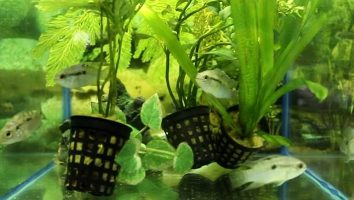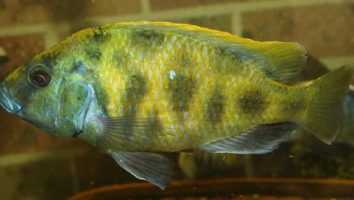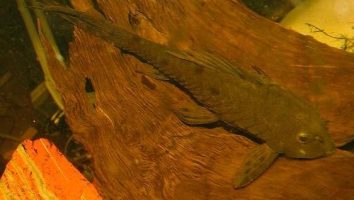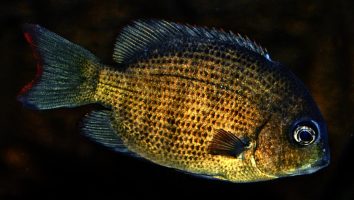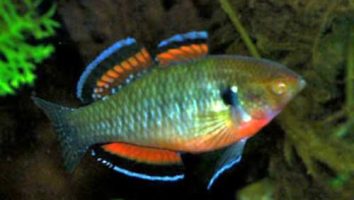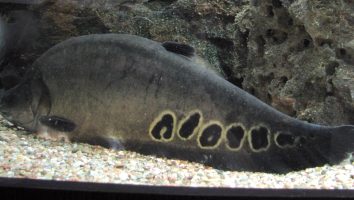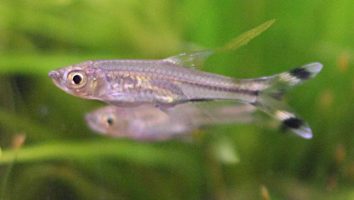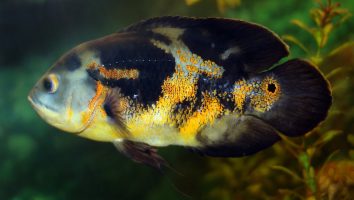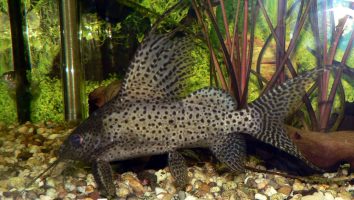Algae eaters are a freshwater fish that are commonly used in aquariums to control algae growth.
There are many different types of algae eaters, but the most common are the Chinese Algae Eater and the Siamese Algae Eater.
Algae eaters are generally peaceful fish, but they can be territorial with each other. They are also known to nip at the fins of other fish.
Algae eaters are not picky eaters and will eat most types of algae. They are also known to eat small invertebrates.
Table of contents
Species overview
Algae eaters are a type of fish that, as you can probably guess from their name, primarily eat algae. There are many different species of algae eater, but the most common in the aquarium scene are the Siamese algae eater (Crossocheilus siamensis) and the Chinese algae eater (Gyrinocheilus aymonieri).
Algae eaters are a popular choice for many aquarium hobbyists because they help to keep tanks clean and free of algae growth. This is important because algae can quickly take over a tank if it’s not kept in check, and it can be very difficult to remove once it’s established.
Algae eaters are generally peaceful fish, but they can be territorial toward their own species. This is something to keep in mind if you’re considering adding more than one algae eater to your tank.
Appearance
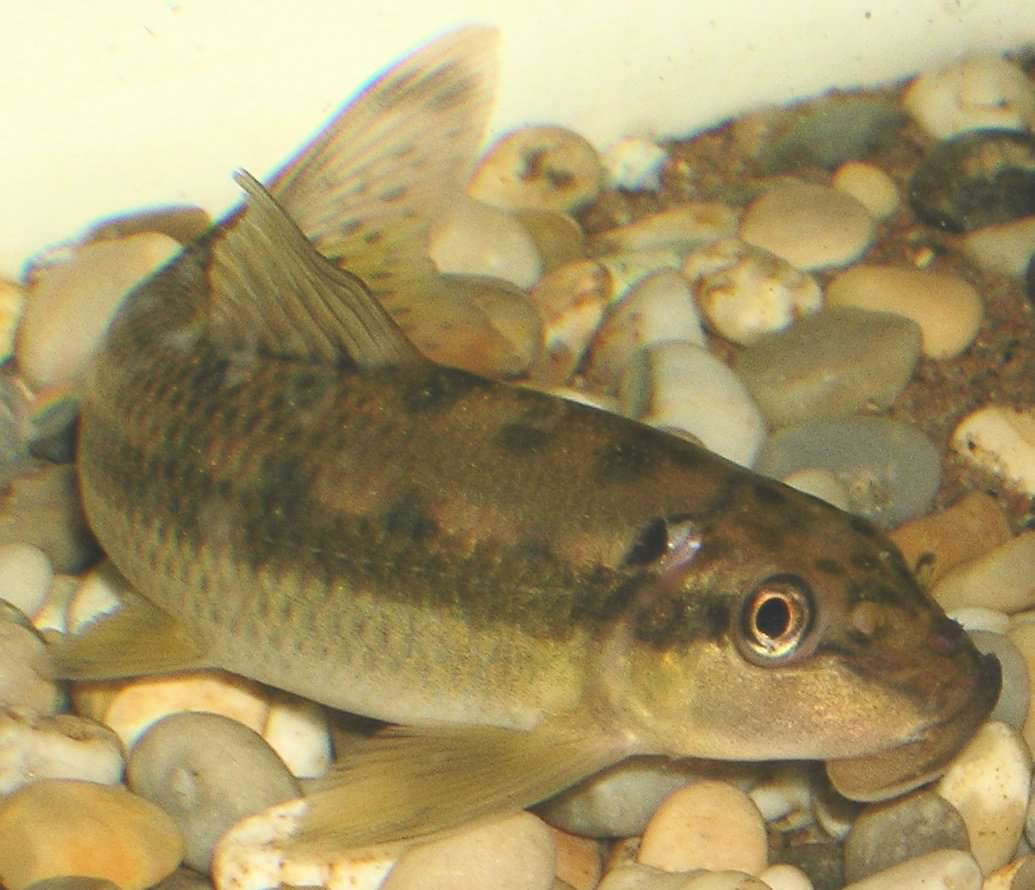
The appearance of an algae eater can vary depending on the specific species. However, there are some commonalities between them.
One of the most notable features is the long sucker mouth that they have. This is used to attach to surfaces and scrape off algae.
They have a long slender body that is usually shades of brown or gray. This helps them blend in with their surroundings.
Algae eaters also have a set of barbels on their chin. These are used to help them find food in murky waters.
The fins on algae eaters are usually fairly small. The dorsal fin is often times not very noticeable. The caudal fin is forked and the pectoral fins are usually long and thin.
Lifespan
Algae eaters are a little different from other fish when it comes to lifespan. In the wild, they only live for around two years. But in captivity, they can live for up to eight years!
The main reason for this difference is diet. In the wild, algae eaters have a very limited diet. They mostly just eat algae. But in captivity, they can be fed a much more varied and nutritious diet. This obviously has a big impact on their health and longevity.
Size
Algae eaters come in a variety of sizes, but the most common type, the Chinese algae eater, grows to be about a foot long.
Tank
Tank Size
Algae eaters come in many shapes and sizes, but the minimum tank size you’ll need will depend on the specific species you choose.
For instance, the common pleco (Hypostomus plecostomus) can grow up to 2 feet in length, so you’ll need at least a 75-gallon tank to house one of these fish.
Other species, like the Otocinclus catfish, only grow to be about 2 inches in length. These fish can be kept in much smaller tanks, like a 10-gallon aquarium.
Water Parameters
Algae eaters are not fussy when it comes to water conditions. In fact, they’re quite adaptable. This is one of the reasons they make such great additions to community tanks. They can help with algae control while not being too demanding.
As long as you stay within the general parameters below, your algae eater should do just fine.
Of course, like all fish, there will always be some individual variation. So, it’s always a good idea to do some research on the specific species you plan to keep. That way, you can make sure you’re providing the best possible environment.
- Water temperature: 60 to 86 degrees Fahrenheit
- pH levels: 6.0 to 8.0
- Water hardness: 5 to 19 dGH
- Alkalinity Levels: 3-10 dKH
What To Put In Their Tank
Algae eaters are a very popular choice for freshwater aquariums. They’re relatively easy to care for and do a great job of keeping the algae in your tank under control.
One of the most important things to consider when setting up an algae eater’s tank is the type of substrate you use.
Algae eaters are known to sift through the substrate in search of food. This means that anything sharp or abrasive can damage their delicate mouths.
A soft, sandy substrate is the best choice for an algae eater’s tank. This will allow them to forage for food without putting their health at risk.
Another important consideration is the plants you include in their habitat. Algae eaters are known to nibble on plants, so you’ll want to choose something that can withstand a little abuse.
Hornwort, water wisteria, and Java moss are all great choices. These plants are tough and can handle being nibbled on without too much damage.
Common Diseases
Algae eaters are pretty darn hardy fish. They’re not immune to disease, but they can definitely handle more than most other freshwater species.
The vast majority of algae eater illnesses come from one thing: poor water quality. These fish are very sensitive to changes in their environment and will often get sick if the water isn’t clean enough.
The most common disease you’ll see in algae eaters is ich. This is a parasites that will attach itself to your fish and cause white spots to form on their body.
If you notice this, the first thing you need to do is improve the water quality in your tank. This will usually get rid of the ich completely. If it doesn’t, you may need to consult a vet for further treatment options.
Other than that, the best way to keep your algae eater healthy is to simply maintain a clean and stable tank. These fish are not very tolerant of change, so it’s important to keep their environment as consistent as possible.
Behavior & Temperament
Algae eaters are a type of fish that, as their name suggests, feed on algae. There are many different species of algae eaters, but the most common in aquariums are the Chinese Algae Eater and the Siamese Algae Eater.
Algae eaters are relatively peaceful fish, although they can be a bit nippy. They usually get along with other fish, but may nip at the fins of long-finned fish.
Algae eaters are active fish and will often swim around the tank looking for food. They are mostly bottom-dwellers, but can also be found swimming in the middle or even at the surface of the water.
Algae eaters are not known for being very intelligent, but they are curious fish. They may investigate anything new in their tank, including plants, decorations, and other fish.
Tank Mates
Algae eaters are peaceful fish that get along with most community tank mates. These fish are native to rivers and streams in Asia. As a result, they’re used to living in close quarters with other fish.
Algae eaters are also bottom dwellers. This means they’re not in competition with fish that occupy other parts of the water column.
Some good tank mates for algae eaters include:
- Guppies
- Mollies
- Platies
- Swordtails
- Tetras
- Danios
- Barbs
Breeding
Algae eaters are one of the easiest fish to breed in captivity. They don’t require any special setup or diet, and they will typically spawn without any intervention.
To increase the chances of breeding, start by adding more males than females to your tank. Usually, a ratio of 2:1 is ideal. You can also increase the water temperature by a few degrees.
Algae eaters are known to be quite aggressive when it comes to spawning. The males will chase the females around and nip at their fins. This behavior can sometimes result in injury or death, so it’s important to keep a close eye on the fish.
When spawning does occur, the female will lay her eggs on a flat surface. It could be a rock, piece of driftwood, or the glass of the tank. The male will then fertilize the eggs.
After that, the parents will usually eat the eggs. To prevent this from happening, you can remove the adults from the tank as soon as spawning is complete.
Alternatively, you can place a piece of mesh over the eggs to protect them. Just make sure that the mesh is small enough that the parents can’t get to the eggs.
The eggs will hatch in about 24 hours. At that point, you can start feeding the fry live food. Baby brine shrimp and daphnia are both good options.
Conclusion
Algae eaters are a great addition to any freshwater tank. They help keep the tank clean and can add some interesting visuals with their unique appearance.
We’ve put together a comprehensive guide on everything you need to know about algae eaters. This includes everything from what they eat to what kind of tank they need.
We’ve also included some tips on how to care for them and what to do if you have problems with them.
Overall, we think algae eaters are a great choice for anyone looking for a low-maintenance addition to their tank.

